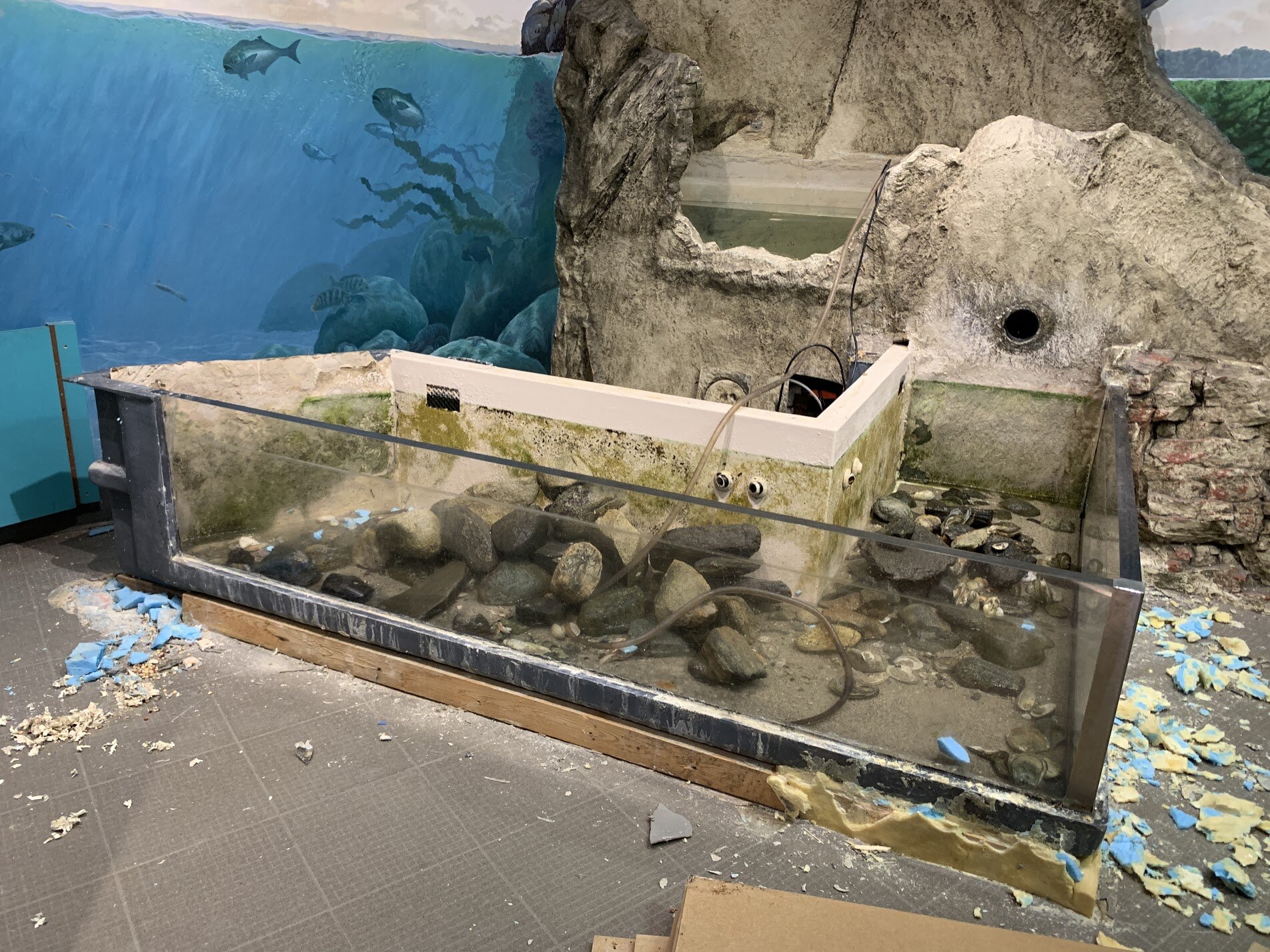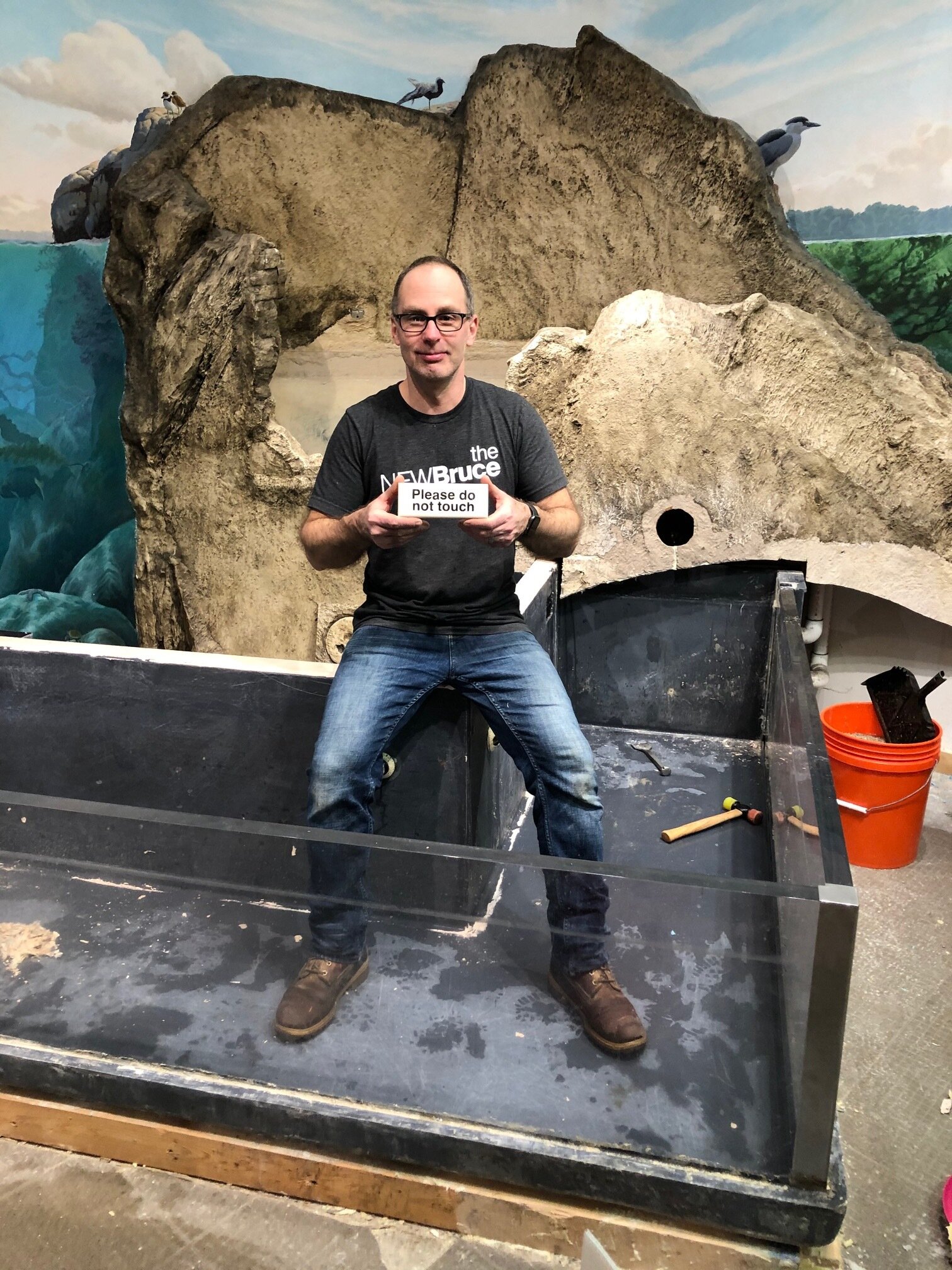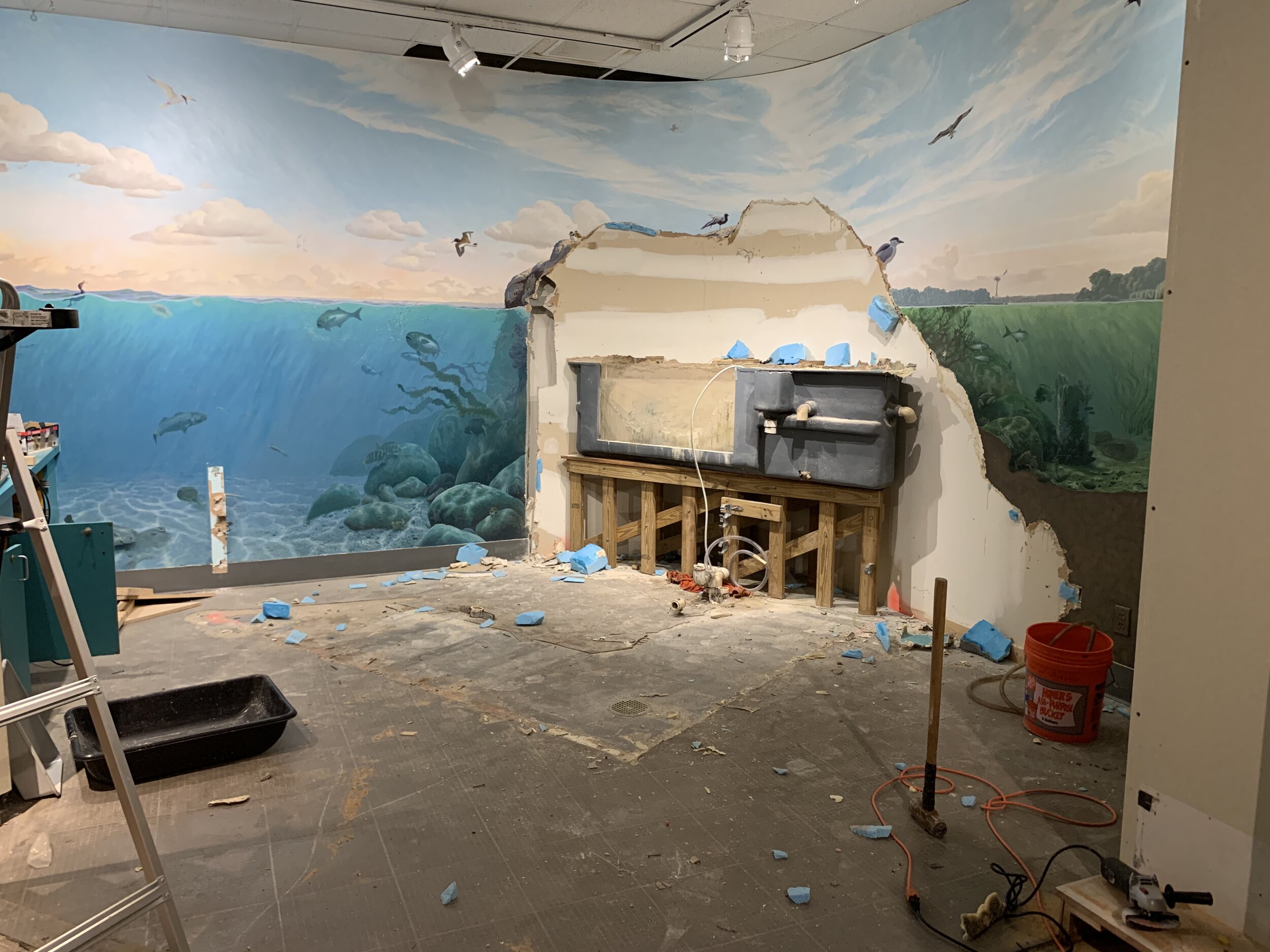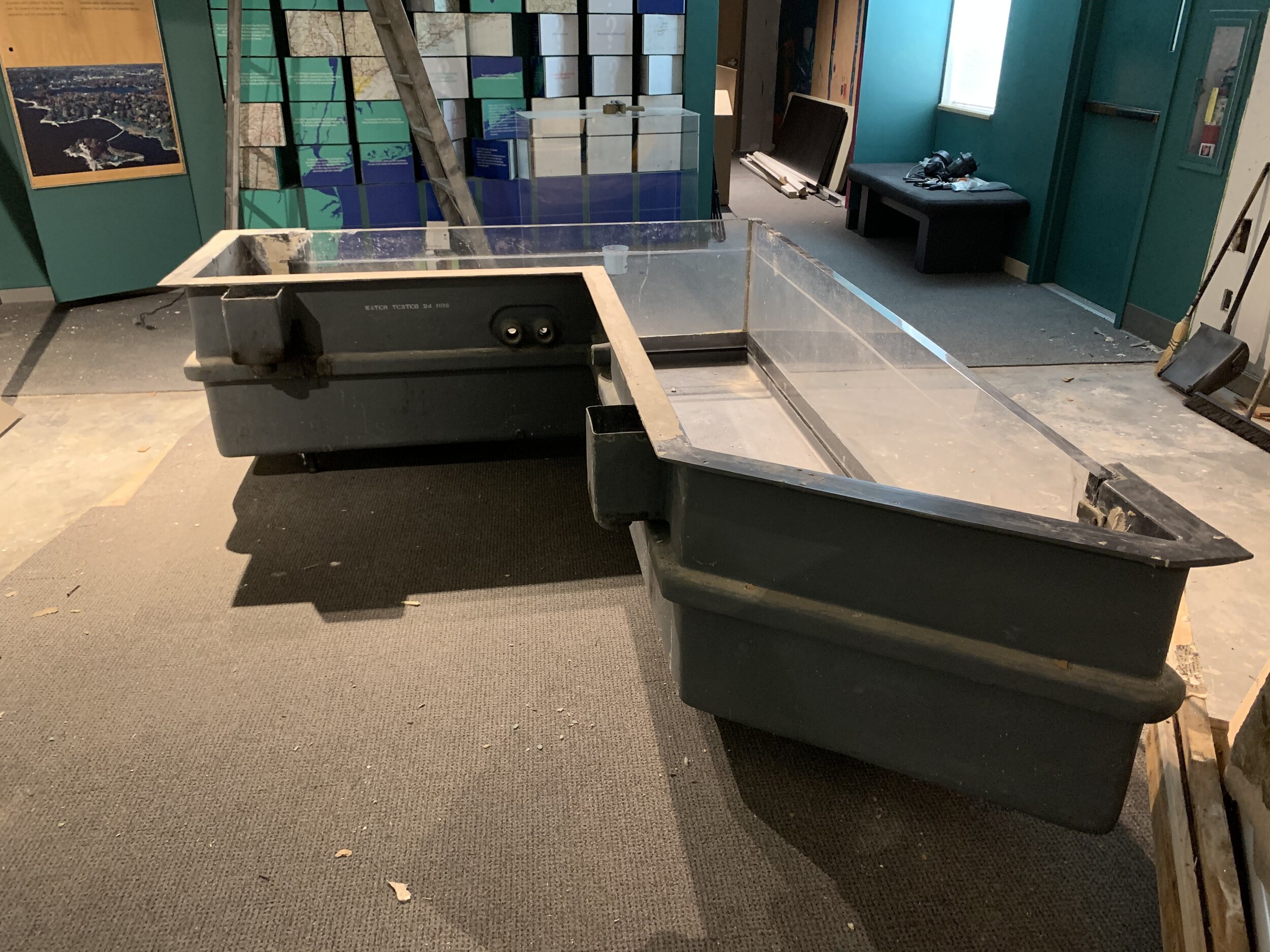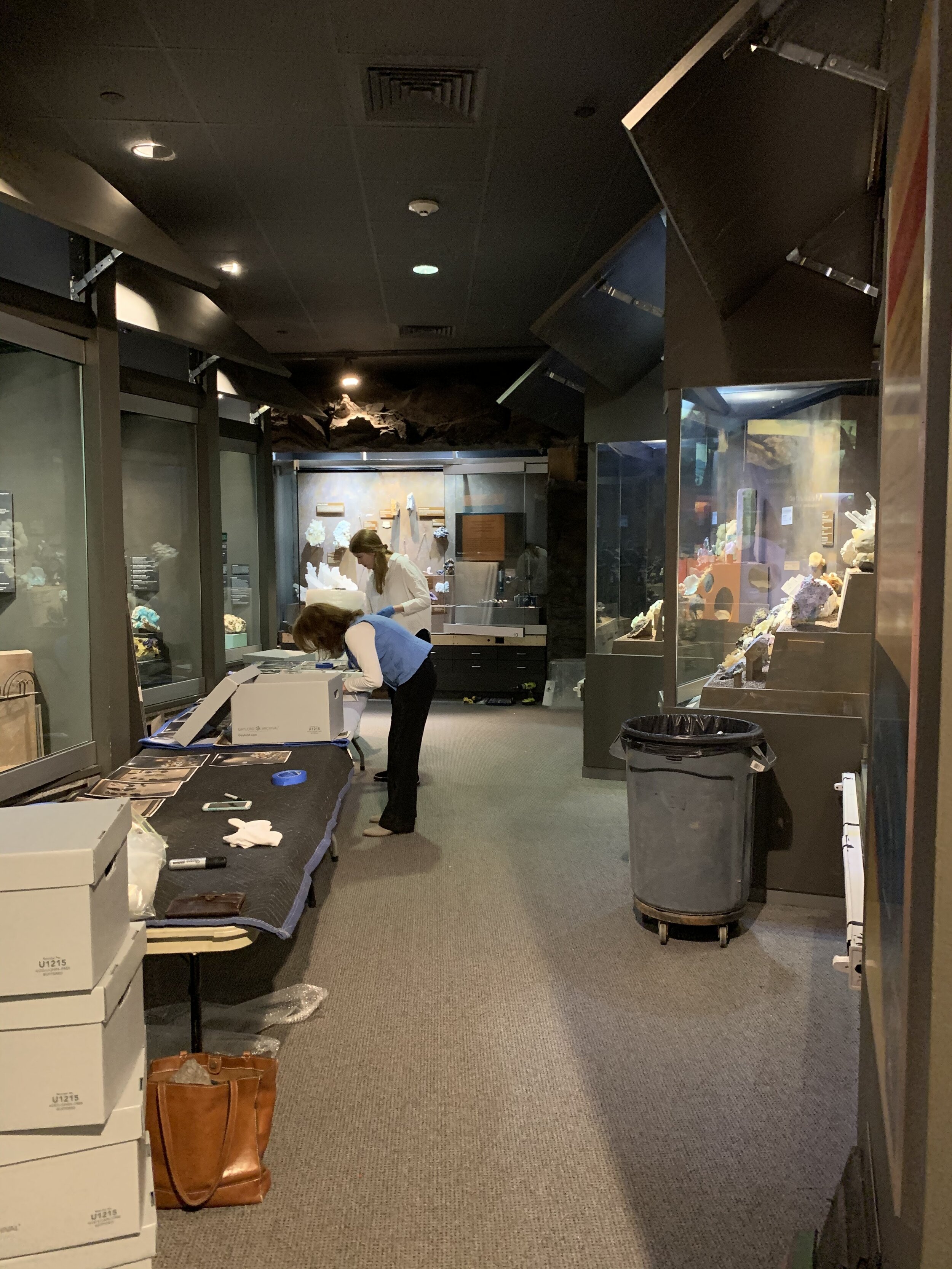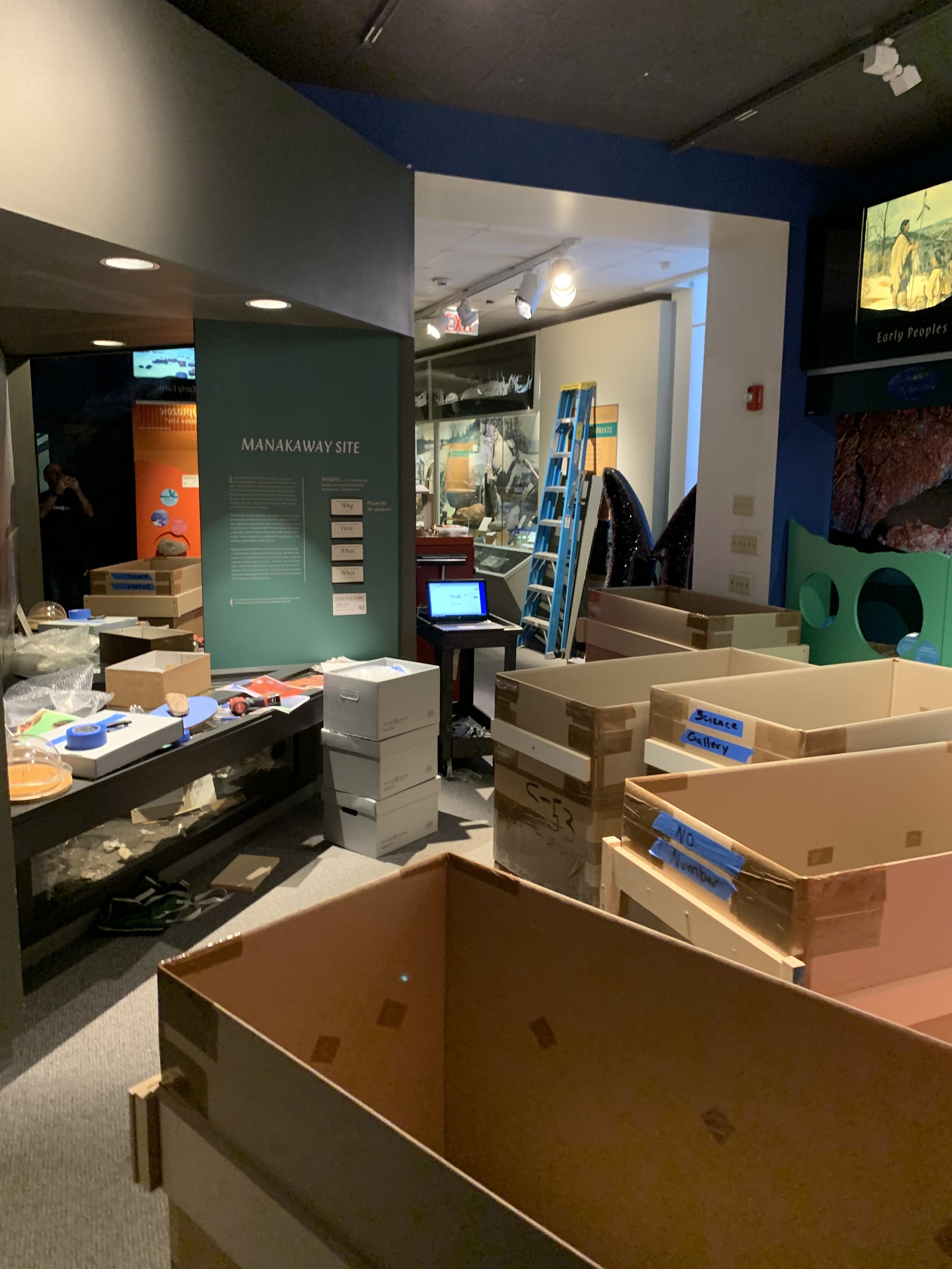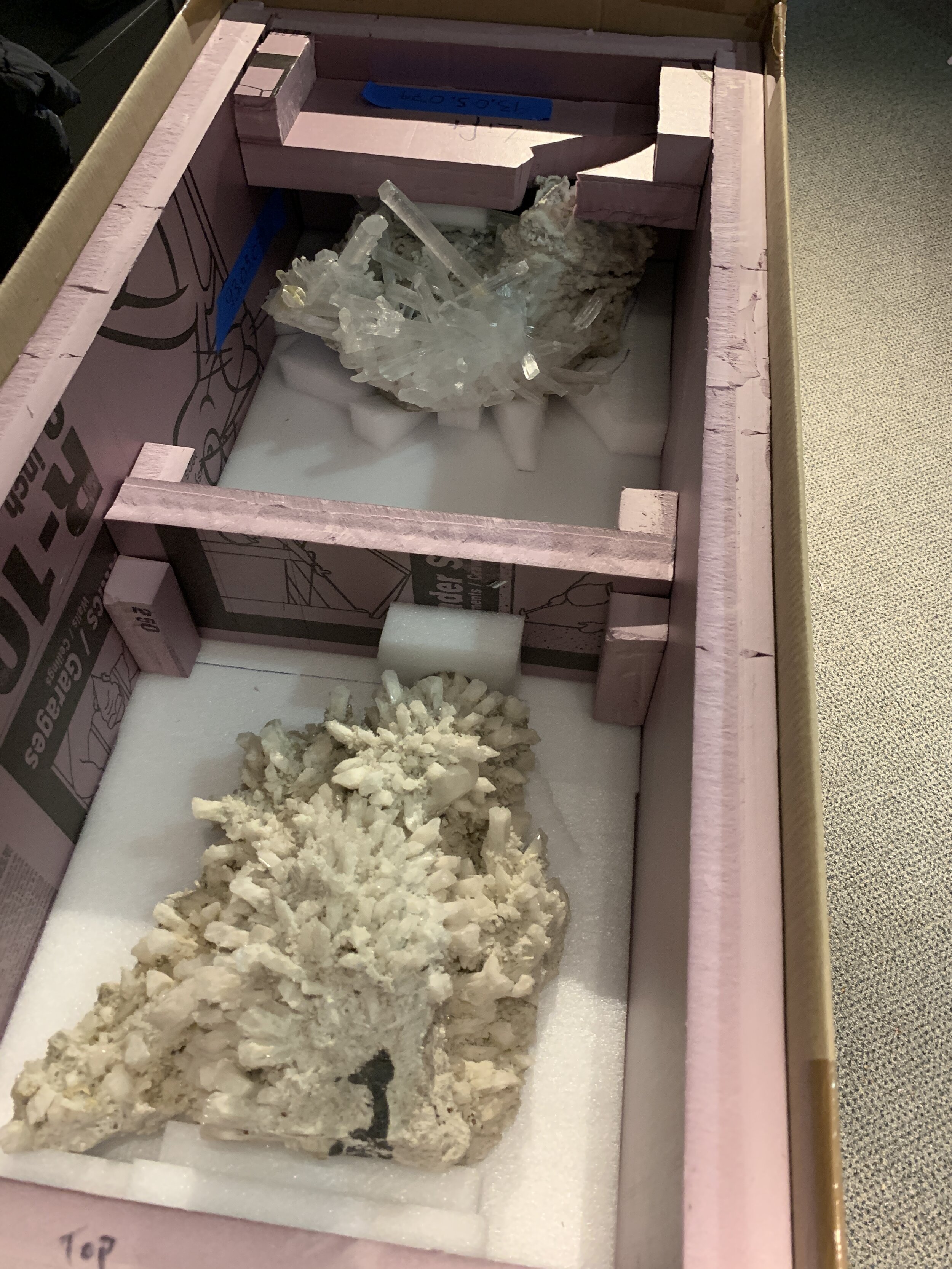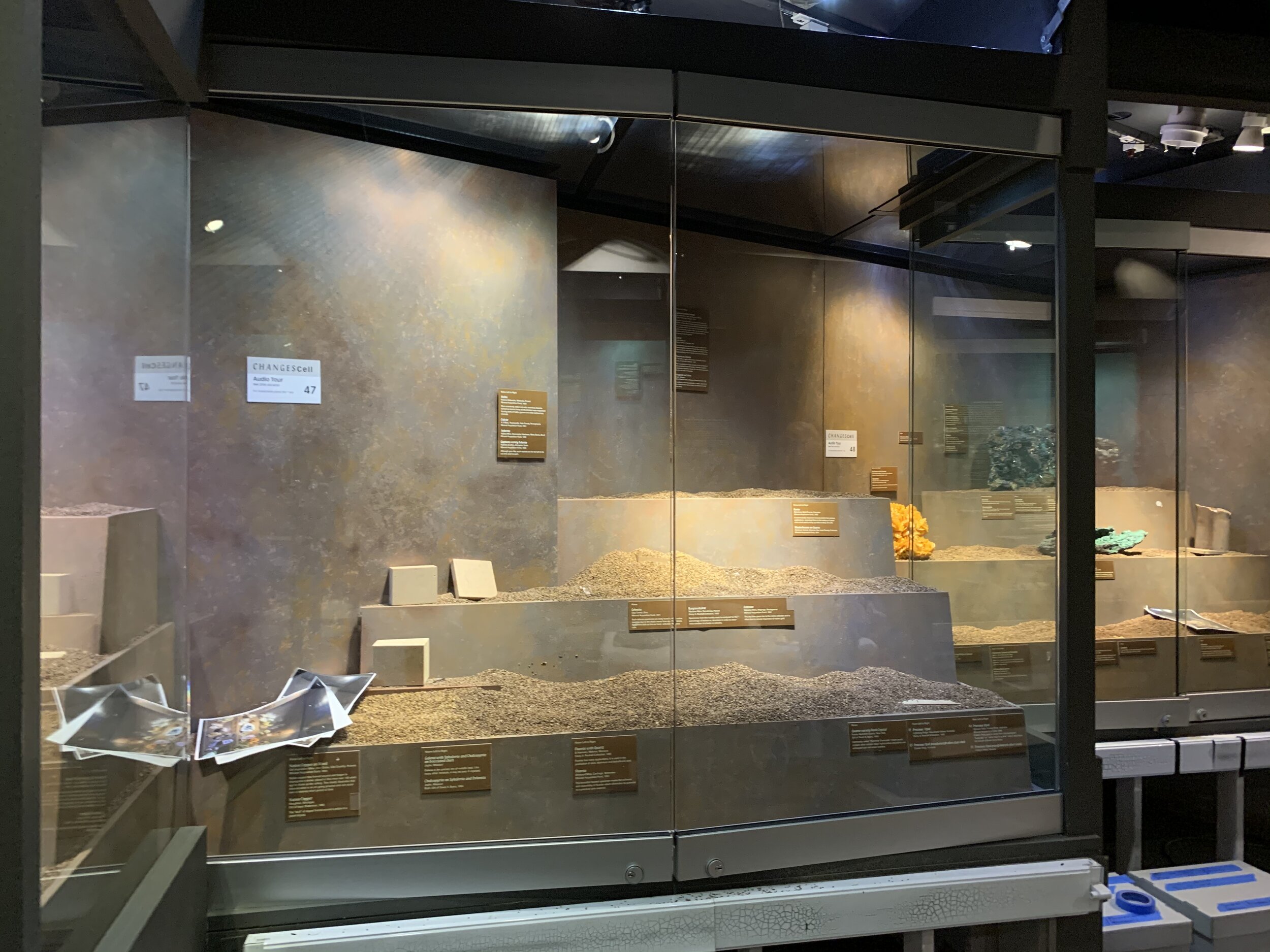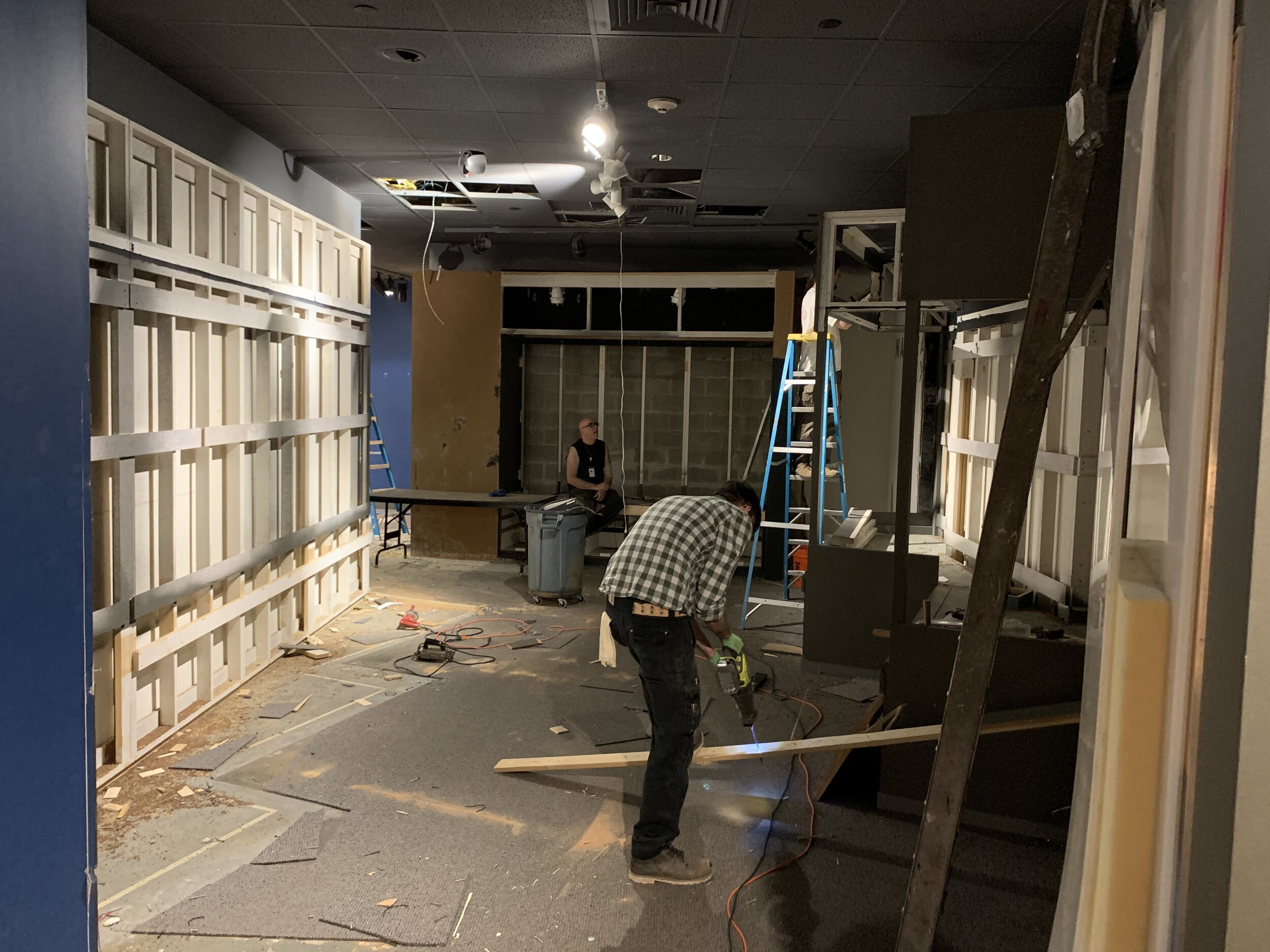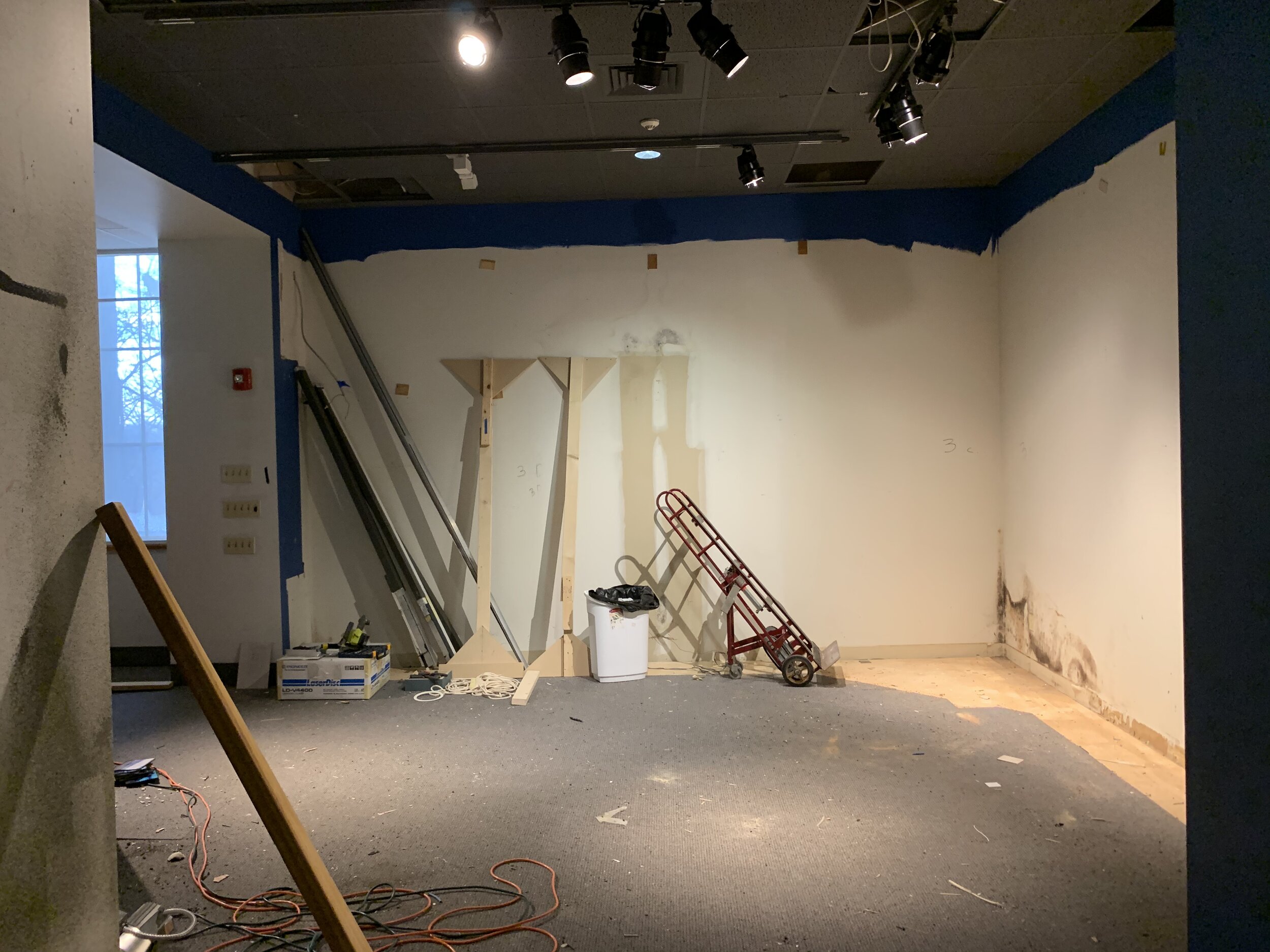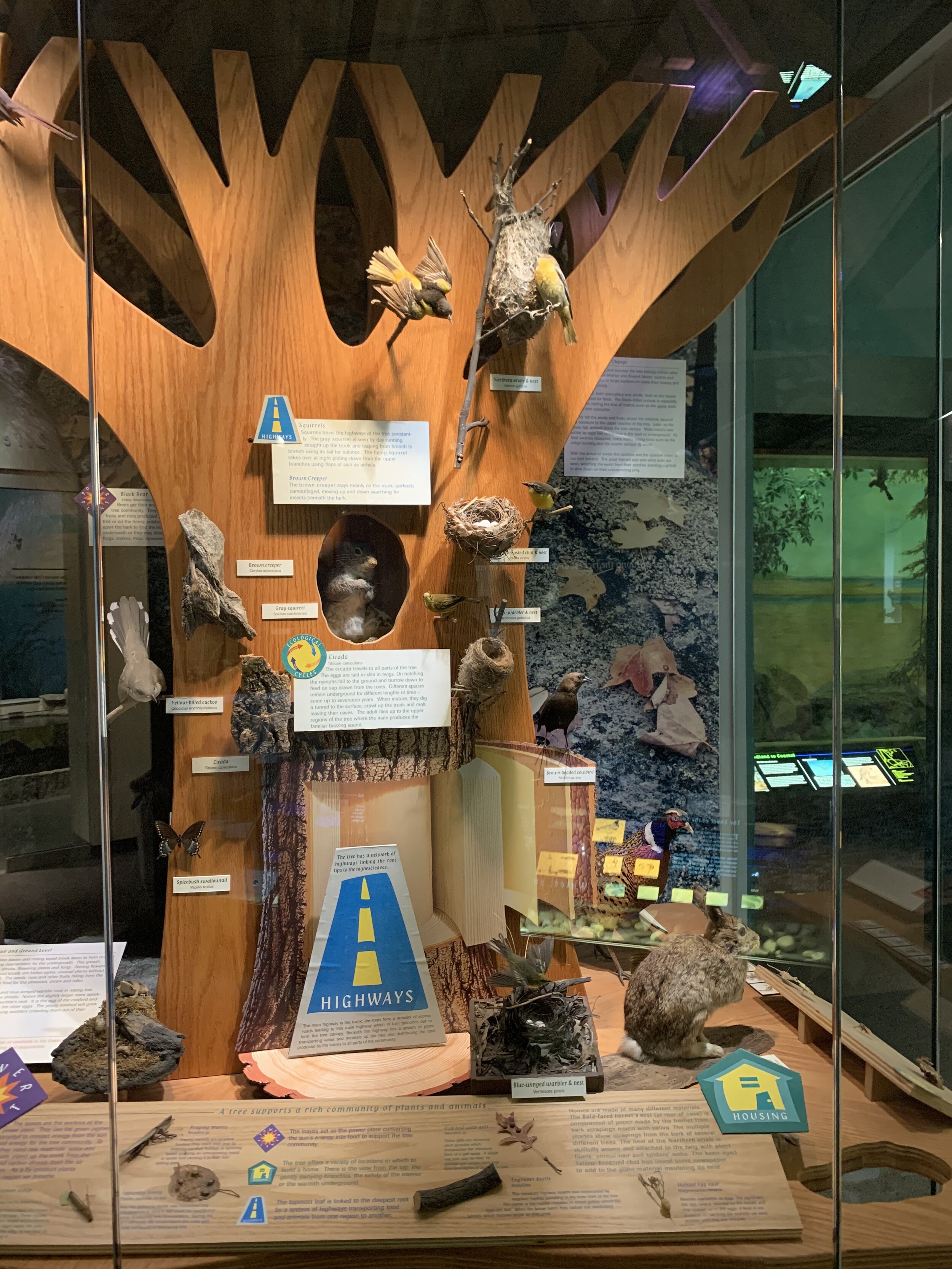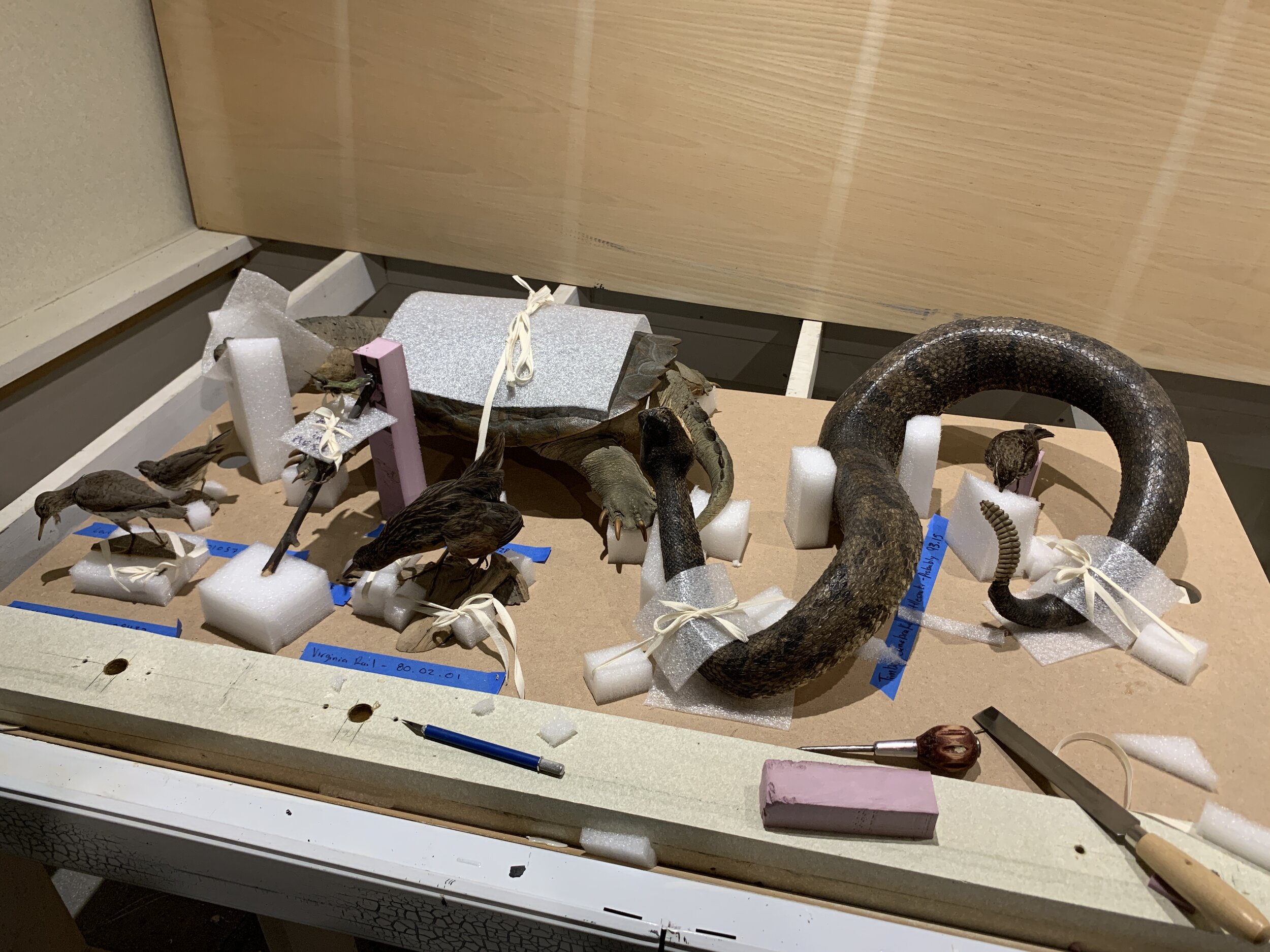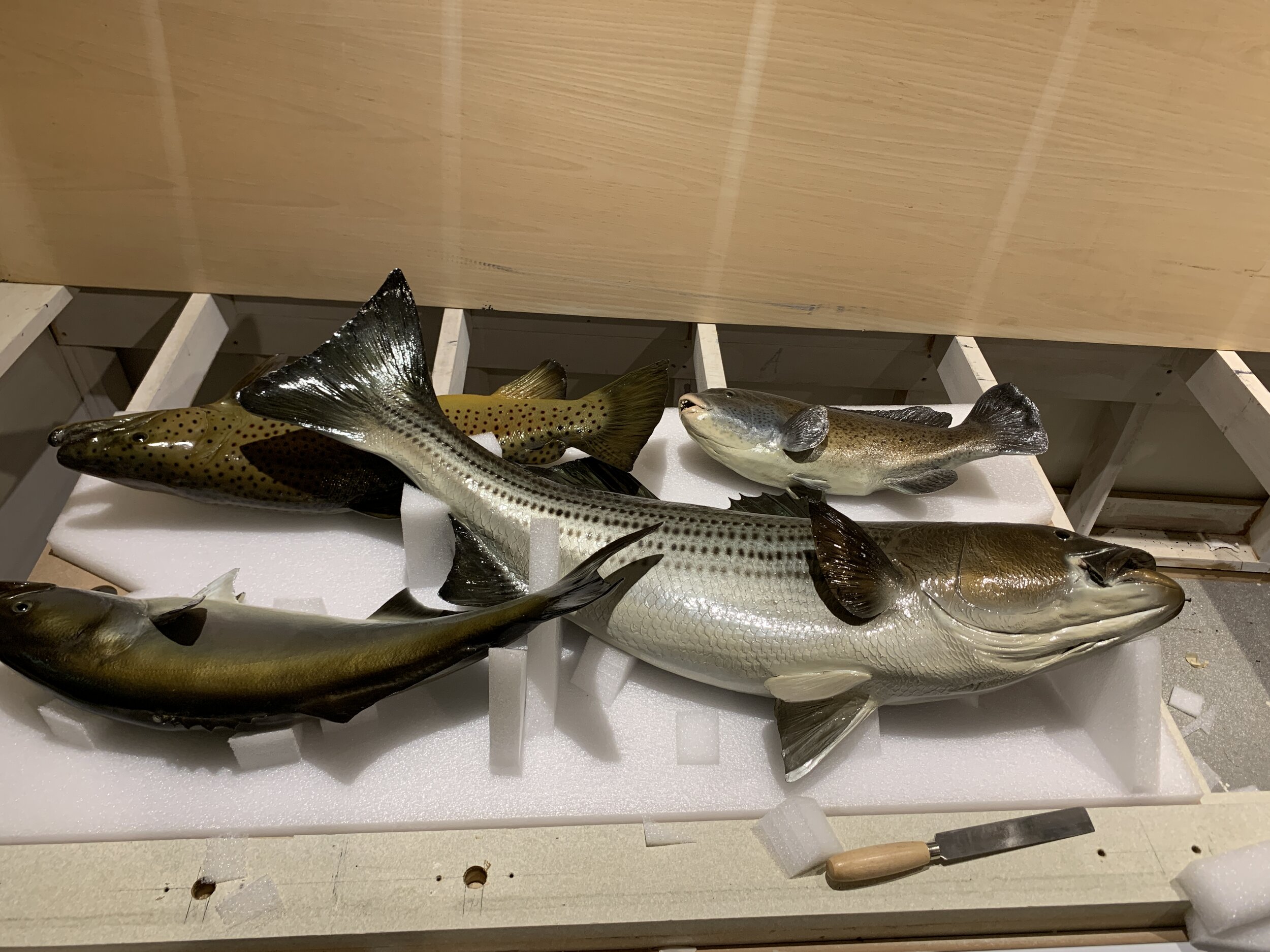Renovating the Permanent Science Galleries at the Bruce
/Changes are coming to Changes in Our Land at the Bruce Museum. On February 2, we closed the our permanent science galleries for a complete renovation and reinstallation. In the time since then, science specimens have been carefully packed away, and most of the existing display cases have been dismantled. This major update has been years in the making, the work of people from every department of the museum. Now, we couldn’t be more excited to see it finally underway.
One area being majorly updated is our marine education room. The animal ambassadors in our tanks have delighted museum visitors, gone to local schools, and provided countless educational opportunities in our critter feeding programs. In our renovated space, we’ll have more live animals to enjoy, including reptiles, amphibians, and even more representatives of local aquatic life.
The existing tanks will be reused, but in different contexts. Presently, they are cleaned out and in storage. As for our animals? They’ve found happy new homes at other local educational institutions, and no fish was left behind.
Our mineral gallery, full of numerous delicate and glittering specimens, had to be dismantled carefully. Cases were opened, and minerals were catalogued, packed, and removed, before the real deconstruction work could begin.
The mineral cases formed an angled zig-zag path, but the actual walls of this hall are flat. Only once the cases were removed could we see the true shape of the space, revealed for the first time since our last renovation, in the 1990s.
Out taxidermy specimens were treated with no less care than the minerals. Packaging materials were customized to best fit and secure each animal, ensuring that they would be preserved for their next chance to be on display.
The only major exception to the frenzy of deconstruction and reconstruction is the woodland diorama. The diorama won’t be taken down, merely updated to reflect a more modern Connecticut ecosystem. One creature that won’t be returning in the new and improved diorama is the cougar. The native Eastern mountain lion was declared extinct after decades of overhunting, and while Connecticut might occasionally see visiting cougars from other areas, no reproducing population remains in the state.
In this photo, you might notice one specific modern addition to the Connecticut landscape: Science Curator Dr. Daniel Ksepka.
What’s next for our permanent science gallery? Once we finish removing the old, constructing the new can begin. Brand new models are being sculpted and painted, new dioramas being designed, and new content being researched and written. While we enjoyed Changes in Our Land while it lasted, science never stops progressing, and neither do we, here at the Bruce Museum.
Want to learn more about our ongoing science renovations? Check out this preview we put up at Town Hall!
- Kate Dzikiewicz, Science Curatorial Associate and Seaside Center Manager



